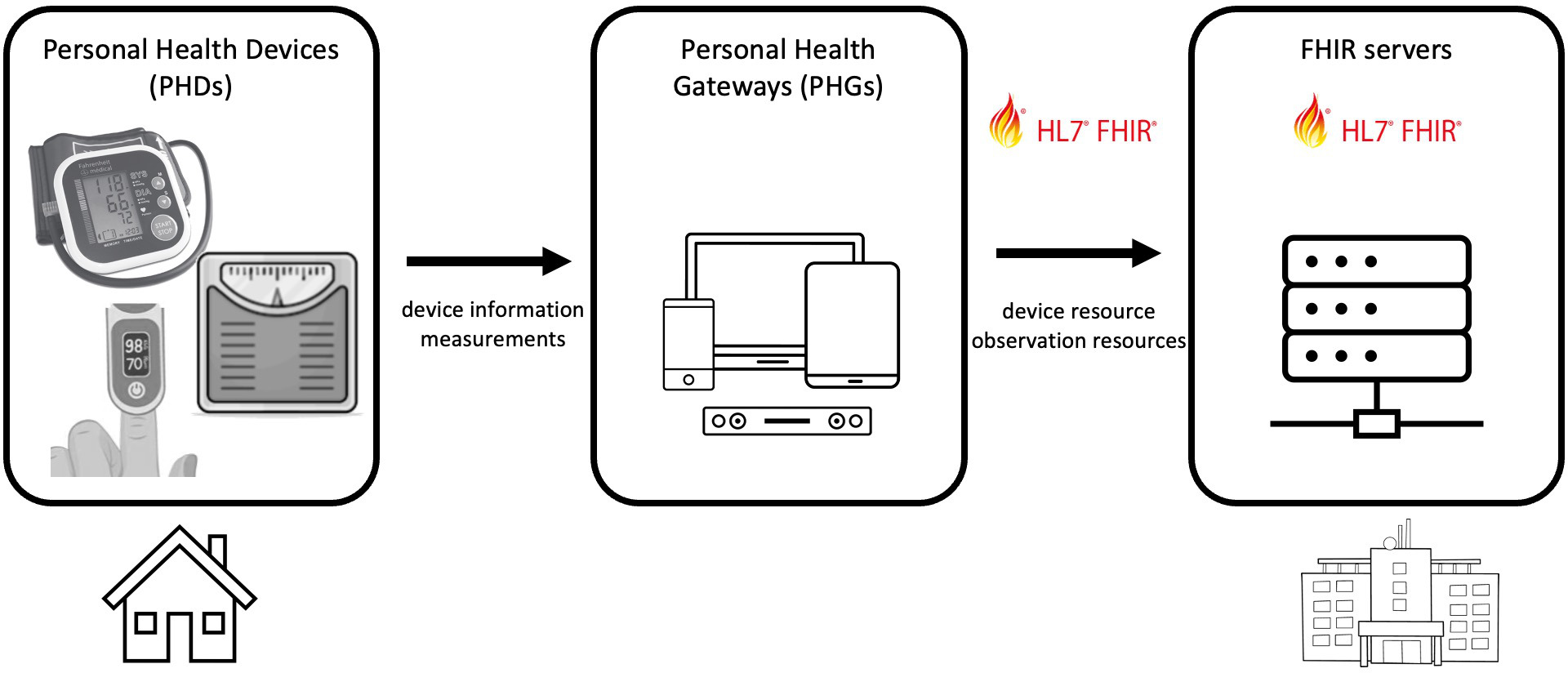This page is part of the Personal Health Device FHIR IG (v2.0.0-ballot: STU 2 Ballot 1) based on FHIR (HL7® FHIR® Standard) v4.3.0. This version is a pre-release. The current official version is 1.1.0. For a full list of available versions, see the Directory of published versions
| Official URL: http://hl7.org/fhir/uv/phd/ImplementationGuide/hl7.fhir.uv.phd | Version: 2.0.0-ballot | |||
| Draft as of 2024-08-16 | Computable Name: PhdImplementationGuide | |||
This is the Continuous Integration Build of the Personal Health Device Implementation Guide, based on FHIR Version 4.3.0. See the Directory of published versions.
This Implementation Guide (IG) defines the use of FHIR resources to convey measurements and supporting data from communicating Personal Health Devices (PHDs) to receiving systems for electronic medical records, clinical decision support, and medical data archiving for aggregate quality measurement and research purposes. PHDs are typically consumer devices designed to be used by people without medical background. These devices are often used in the home and/or on the patient's person and are a key element in any remote patient monitoring program. In most cases there is a Personal Health Gateway (PHG) that handles the PHD communications. The PHG translates the PHD data to the appropriate form and uploads it to the receiving systems. Uploads generated by compliant PHGs shall use this implementation guide when transforming the PHD data to FHIR resources.

A partner IG is the Point of Care Devices (PoCD) Implementation Guide. PoCDs focus on acute care and are operated by medical professionals. PoCDs are more complex than PHDs but both are based upon the IEEE 11073 Domain Information Model (DIM). The PoCD DIM is based upon the IEEE 11073 10201 standard while the PHD DIM is based upon the IEEE 11073-10206 standard. The purpose of both the PHD and PoCD IG is to assure that the device DIM data is mapped to FHIR in a standardized and consistent manner. Given that both IGs are based upon the IEEE 11073 DIM, the IGs are harmonized to the extent possible. Neither IG interprets the data or indicates what is to be done with the data once in FHIR form.
Those readers who are interested in consuming the uploaded data do not need to know anything about the IEEE 11073-10206 standard or the mapping algorithms defined in this IG. Instead one can go directly to the Profile Consumers chapter. The Overview chapter may also be of interest.
Those readers who are implementing a PHG are going to need an understanding of the IEEE 11073-10206 standard and the communication protocol used by the PHD being mapped. The Technical Implementation Guidance section gives an overview of the essential components of the IEEE 11073-10206 model and how its concepts are related to FHIR, but it is not a tutorial. The Profiles section gives the normative mapping between IEEE 11073-10206 concepts and FHIR resources, making several references to sub-sections in the Technical Implementation Guidance section for reminders. The IEEE 11073-10206 model is supported by the Bluetooth SIG Generic Health Seonsor profile. The older IEEE 11073-20601 specificiation supports almost the same model and provides an application layer stateful protocol. This IG can be used with PHDs supporting one of these protocols.
It should be noted that this implementation guide bases its mapping algorithm on the IEEE 11073-10206 model and standard (IEEE 11073-10206 Personal health device communication - Abstract Content Model). The reason for this approach is that the IEEE standard provides a generic and extensible model for observations and a means to assure a consistent time management.
However, this choice does not mean that this guide is only of use for IEEE 11073-10206 compliant PHDs that use one of the mentioned protocols. Any PHD that provides a means to establish a PHG-validated consistent time stamp can use this guide. The mapping in this guide can be used with many existing PHDs and Bluetooth Low Energy PHDs, both proprietary and those following one of the specific Bluetooth Low Energy Health Device Profiles. See Non-IEEE 11073 PHD Devices for more information.